Keyboard: How Quickly Can You Press a Key
If you ever wondered whether a key-press happens in milliseconds or microseconds in a keyboard wonder no more.
TLDR; It takes several milliseconds depending on the switch and finger speed.
What is measured?
A switch has pre-activation (pre-travel), activation and post-activation distance. In case of Gateron Yellow optical switches, so called ‘speed’ switches, pre-activation is about 1mm, activation happens for another 1mm (height of optical elements) and post-activation distance is about 1.2mm. For other Gateron MX style switches pre-activation is 2mm, activation is 1mm, and post-activation is 2mm. Since the setup uses voltage waveform from an optical switch as a trigger only the activation process is subject to measurement. Time taken for pre-activation and post-activation are not accounted for. Secondly, the switch actuator does not have to travel all the way through the actuation zone for the state change to be registered in the microcontroller. The GPIO pin registers a “high” when voltage rises to ~0.8V and “low” when voltage falls below ~2V.
Setup

The test setup consists of a highly responsive optical switch. The phototransistor has rise and fall time of a few nanoseconds. You can verify from the oscilloscope screen. Yellow line represents voltage drop across the phototransistor while green line is the pulse applied to IR LED. Voltage drop across phototransistor is inverted owing to the nature of the circuit. Each horizontal division is 1us.
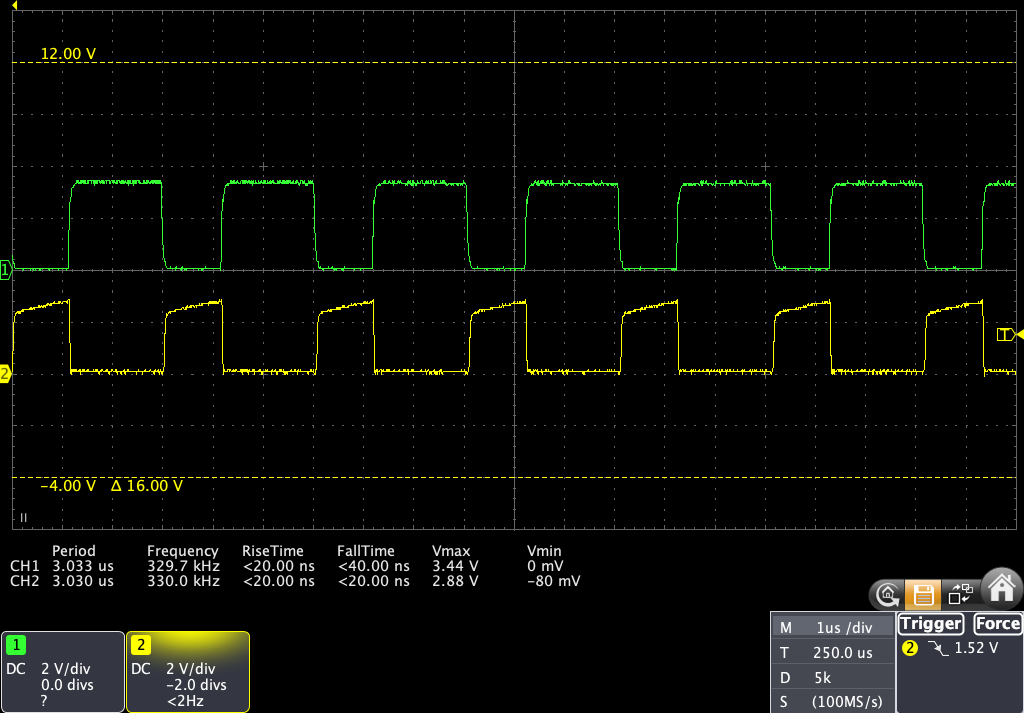
Before measuring key-press time IR LED is driven from a constant voltage source. When key is pressed IR light is interrupted from entering the base junction of phototransistor. This corresponds to fall time and since the plot is reversed the yellow line rises.
The switch used is of Gateron Yellow optical linear variety. About 10 measurements are taken but only a representative sample is presented here.
Fast Key Press
It takes about 100us for fall time. Each horizontal division is 100us and vertical division is 2V. Voltage rises from ~0V to ~3.3V. You can observe that voltage rises very quickly to 0.8V, in less than 50us. This is when GPIO pin will register state change. These types of fast key-presses are rare in normal typing though.
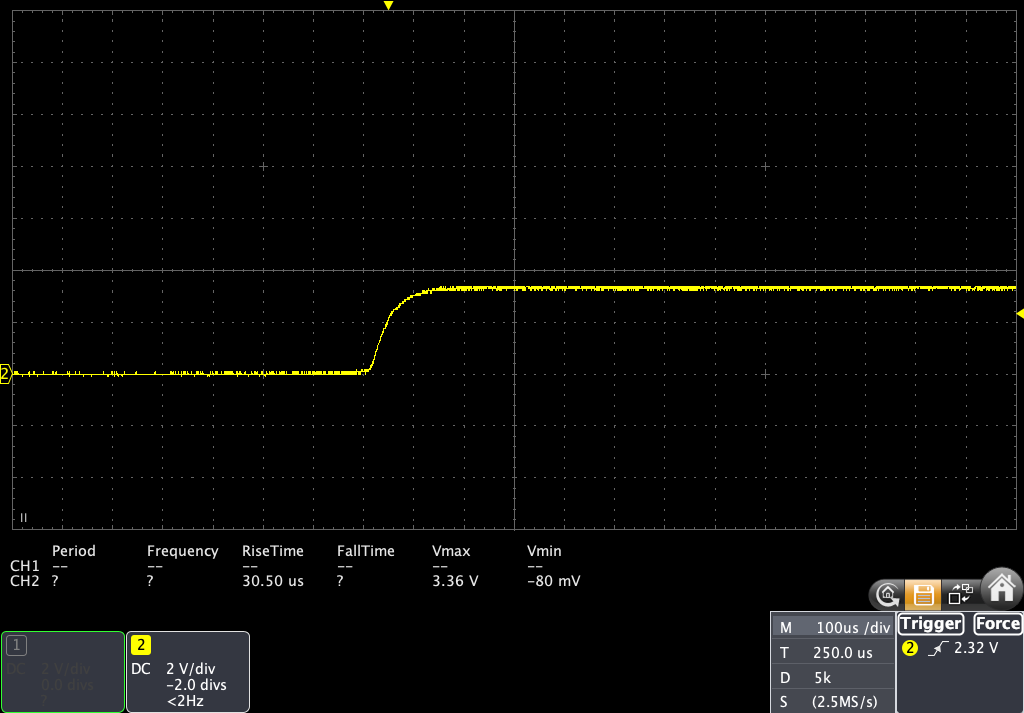
Average Key Press
It takes about 200us to 2ms. Each horizontal division is 100us and vertical division is 2V as above. Normal typing could be characterized as average.
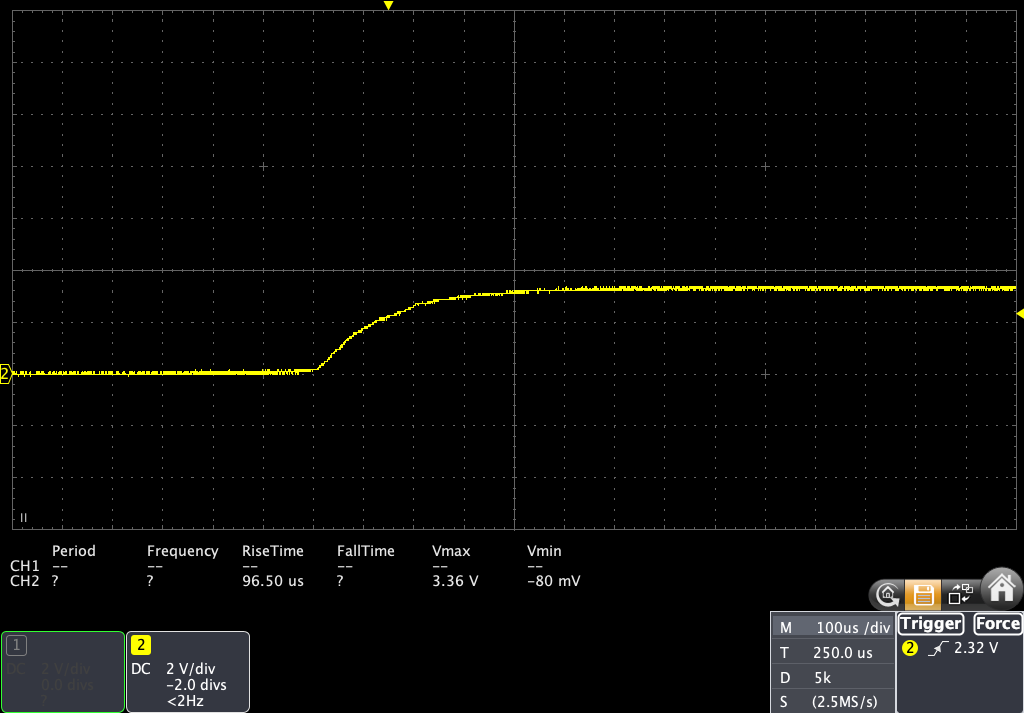
Lazy Key Press
It takes over 2ms. Each horizontal division is 1ms and vertical division is 2V. This is generally rare for switch with lighter springs but quite common for switch with heavier springs.

Average Key Release
It takes about the same time as key press. Each horizontal division is 100us.
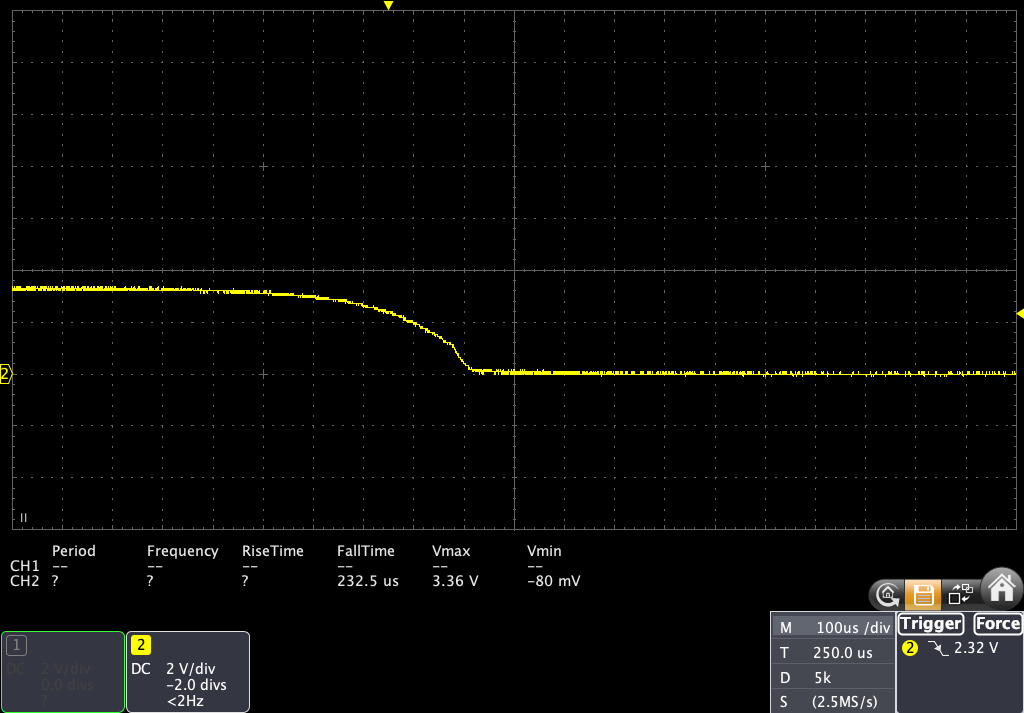
Note
-
Although no serious statistical evidence is compiled and sample size is just one, averaging over 10 key-presses a switch with lighter spring (15gf) resulted in faster key-presses compared to heavier Yellow (35gf) and Red (45gf) switches.
-
With 15gf it is possible (although rare) to get sub 100us key-presses.

-
There is generally a clean rise and fall curve of voltage drop across phototransistor. This is the reason why optical keyboards do not require debouncing. Even though there is a transition region of voltage (0.8v-1.2v) where GPIO pin can read unpredictable logical value, it is generally not the case. If such problem indeed was encountered a comparator with hysteresis (Schmitt trigger) can be added to the circuit.
-
How fast can an optical switch detect a key-press? As you may have noticed the optical switch used in this experiment has extremely low rise/fall time. So the key event is detected as soon as the voltage crosses TTL logic threshold. The switch uses about 2mA current (for IR LED and phototransistor combined). Given that USB can supply 500mA, all the switches in the keyboard can remain powered up all the time. This linear (non-switched) circuit is only limited by how soon the microprocessor can read the GPIO pins. On Nordic’s nrf52840 MPU a tight loop can read GPIO ‘ports’ (which contain a group of GPIO pins) all at once at 460kHz frequency (see pic). Suffice to say an optical switch will not be on the critical path.
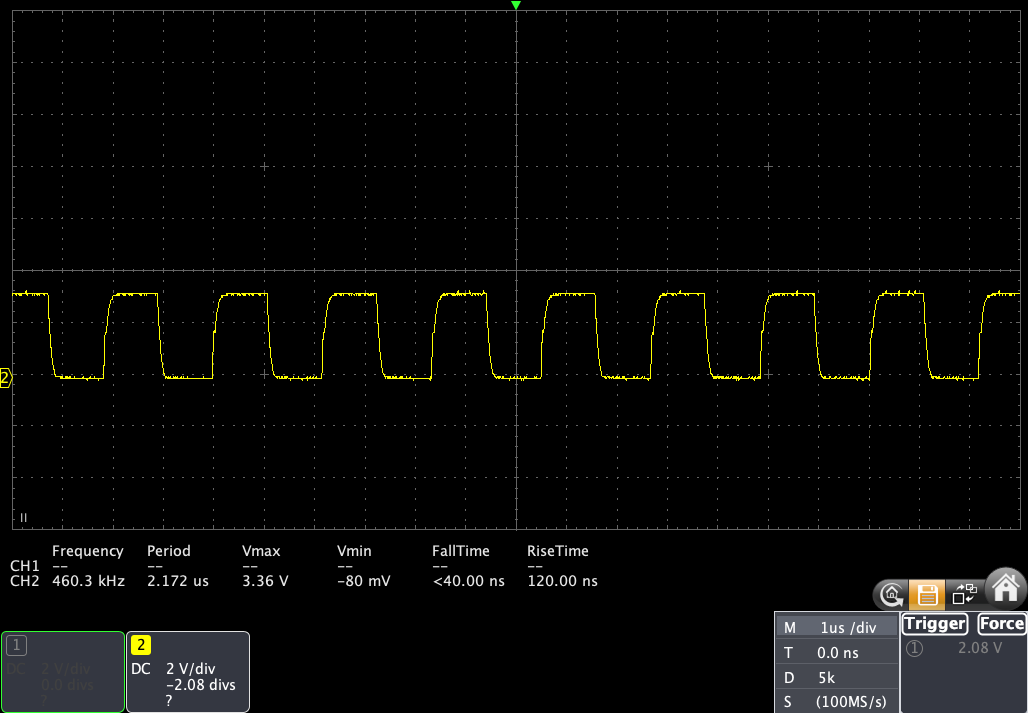
- This test does not measure keyboard latency. After the microprocessor detects state change event it has to ship the data to the host computer. Since keyboards are usually configured as HID there will be at least 125us polling delay if the USB port is configured as HS (high speed) USB or (most likely the case) 1ms delay if port is FS (full speed) USB. The application on the host computer will have additional delay as well.
UPDATED Jan 21, 2023
After the above experiment I was curious to find out if the voltage across phototransistor changes throughout the 1mm height through which the switch actuator travels while closing the aperture available for IR light to pass through. The result might surprise you. I used the above setup but changed the input pin to ADC (analog to digital converter). When the actuator is pressed, voltage slowly rises from 0V to 3.3V. The ADC on nRF52840 is capable of 16 bit measurement, which provides adequate resolution.
IR light from LED is so narrow that only about 0.1mm to 0.2mm distance of actuator actually participates in voltage change.
This is a far cry from 1mm of actuation distance that was anticipated. As the key is pressed voltage remains at 0V until the critical distance of 0.1mm to 0.2mm through which voltage suddenly rises to 3.3V. This spot is at the same height as the center of the IR lens. All the key-press numbers measured above are relevant for only 0.1mm to 0.2mm of actual key travel. Let’s say it took 200us to travel 0.2mm distance. This translates to finger speed of 1m/s – not unreasonable.
Instead of referring to actuation distance we can call this actuation point. This point is about 1.5mm from the top of the switch for Gateron Yellow and about 2.5mm for Gateron Red optical switches. Finger do not travel at a constant speed. It accelerates from standing start. One can guess that it would take 1ms to over 2ms to register a key-press event from the moment finger starts moving, in an optical switch setup with infinitesimal (nanoseconds) rise time. In a mechanical switch (with electrical contacts), there is additional 5ms to 7ms delay owing to debouncing.
Conclusion
It would take 1ms to over 2ms to register a key-press event from the moment finger starts moving, in an optical switch setup with infinitesimal (nanoseconds) rise time.